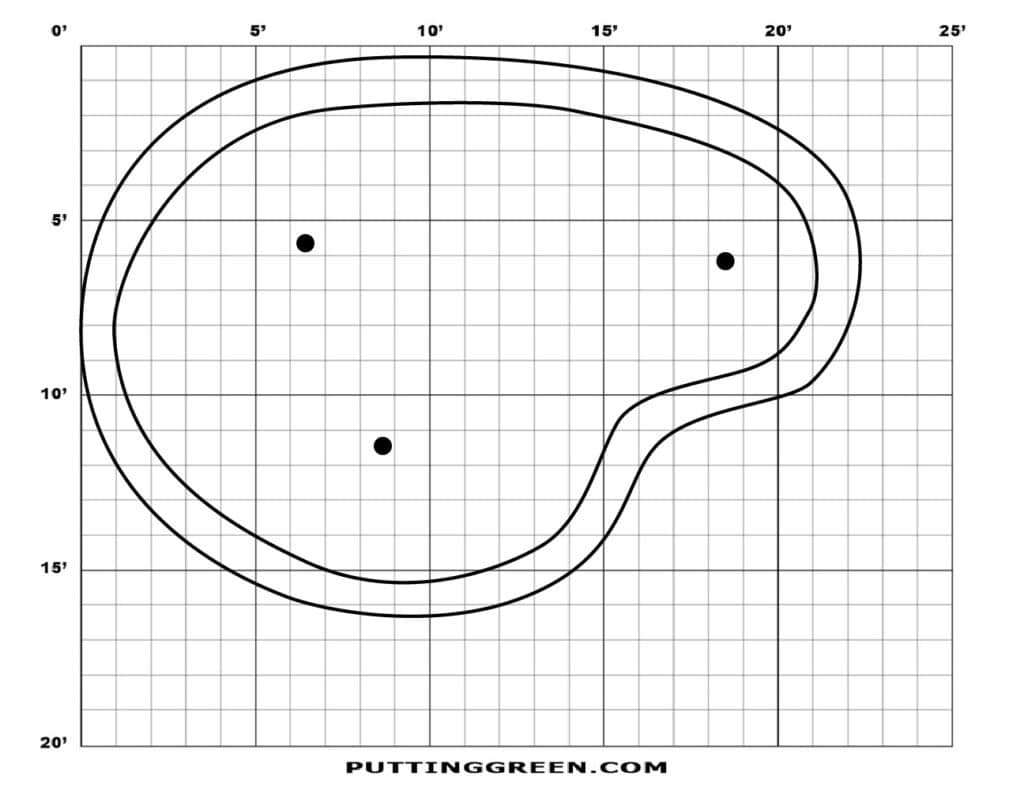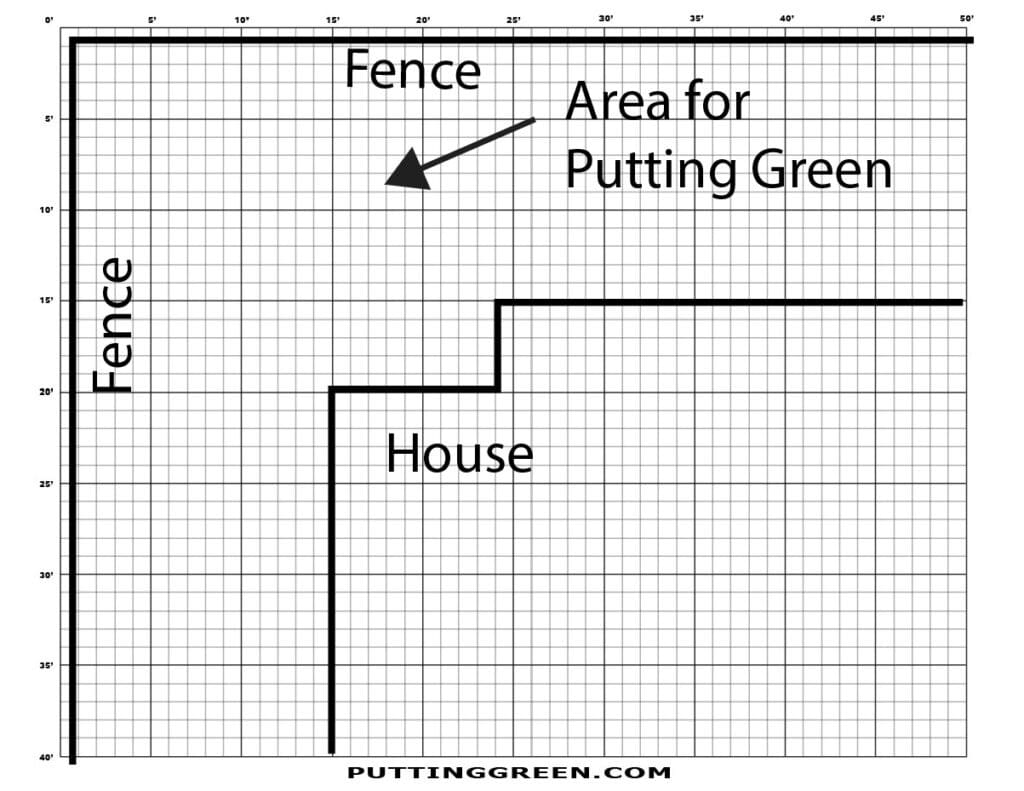If you are seriously thinking about improving your golf game, you might want to install putting green turf in your backyard to challenge and practice your game in the comfort of your own home. Not only does it improve your game, having synthetic putting green turf also has more benefits than you think.
This is due to its cost-effectiveness, aesthetic value, customizable ability and more. Therefore artificial or synthetic turf is a much better choice when building your own practice green at home.
There are different types of artificial turf used for putting green and each provides different performances based on their quality. Carpet-based or low-quality artificial putting green will not resemble the texture of real grass.
To get the most out of your putting green, you must install high-quality putting green that simulates real grass and produces proper ball roll as if you were playing at a country club.
It is important to understand the characteristics of different materials to create the putting green that meets your needs and is suitable for your skill level.
This post explains putting green turf as well as their characteristics so that you can make a well-informed decision when buying your own DIY outdoor putting green kit.
Why you should use synthetic putting green turf?
Artificial or synthetic putting green turf is superior to real grass because synthetic turf is greener throughout the year and requires no soil, irrigation nor fertilizer, therefore it will save you time and money.
Most synthetic turf requires little to no maintenance. Please keep in mind, synthetic turf for putting green is different than the normal synthetic turf used for your lawn.
Common materials of artificial putting green
There are different types, styles and designs of artificial grass to choose from and each type of grass performs differently. Polypropylene and nylon are the most popular types of artificial putting green available on the market today. Each type has its own advantages and disadvantages, which is why both types still exist in the market today.
Nylon turf: Nylon synthetic turf has better quality than polypropylene turf. It requires less maintenance and needs no infill for the grass because it can stand up by its own.
The disadvantage, however, nylon turf is more expensive because of the extra step in the production process to heat up the turf material. The nylon synthetic turf is also not recommended for shots beyond 30 yards because the ball would bounce uncontrollably unless you hit a perfect shot or have a great backspin on the ball.
Polypropylene turf: Polypropylene turf is less dense, therefore you will need an infill to make the grass stand up. This type of turf requires more maintenance than nylon turf because the grass will lay down in one direction much like a used carpet. To fix this problem, you need to maintain the turf by rolling its grass using a putting green roller.
The polypropylene turf is great for shots from any distance because it has an infill to hold the golf ball very well. The more sand infill you have the better your putting green absorbs golf balls from longer distance. This turf is cheaper and more popular than nylon turf.
Different types of synthetic putting green turf
Synthetic putting green turf comes with different types of surface that could affect the movement of the ball. For practice putting green, the artificial grass with bent grass style and short blades is preferred by amateurs and professionals because the style resembles the natural grass used for top golf courses. The blades are trimmed off along the top to resemble real grass that is trimmed using a lawn mower.
Fringe grass is taller, straighter, and usually installed around your green to let you practice both chipping and putting. This could be used to improve your golf game significantly and give your private backyard putting green a real golf course look.
Putting green infill impacts performance
Infill is the material that helps maintain resilience and keeps the grass blades upright. The types of infill material can affect ball speed, bouncability, and control for different strokes. One of the most common infill material used is sand or a sand mixture that gives your practice green excellent cushion and stability just like real grass.
Face weight
Knowing your synthetic turf face weight is very important when you’re buying artificial putting green for your home or office. Face weight is the amount of material used per square yard in synthetic grass.
High face weight means high quality putting green that lasts longer. The optimal face weight for putting green is approximately 40 to 60 ounces.
Pile height
Pile height is simply the height of your grass blades. It is important to know because good synthetic putting green usually has a short pile height number. The reason is because you want your ball to roll like it normally would on the golf course.
Having a high pile height is like golfing in tall grass. Most synthetic putting greens usually are ½ inch to ¾ inch thick.
Stimp rating
The stimp rating is a number that will tell you how fast a golf ball rolls on a putting green surface. The lower the stimp rating, the slower the ball will roll and vice versa. This number can vary based on how the turf is installed.
A good stimp rating for putting green is between 9 and 11. You could manipulate and adjust this number to your liking by rolling (brushing) the turf to lower the rating or adding more infill to increase the rating.
Installing your own synthetic putting green
DIY putting green kits are available for homeowners who want to install a putting green themselves. Buying a DIY putting green kit will save you money because you won’t need a professional help. Most kits come with all the necessary tools and instructions on how to build your own putting green.
If you need any help or have any questions please don’t hesitate to contact us. We are the expert in putting greens.
Professional putting green installation
If you choose to get professional help when installing your synthetic putting green, we can help you too. Go to our city page or installation page to get connected with an experienced and reputable company in your local area.
Hiring a professional crew to install your putting green will make sure you get the highest quality work. This is very important to properly stretch the turf to avoid ridges, visible seams, or any other imperfection in the future. For example, the turf can shrink or expand as its conditions change. This could greatly impact the ball movement.
With the advice and installation service offered by professionals at PuttingGreen.com, you can be sure of getting consistent play quality and maximum lifespan from your synthetic putting green turf.

